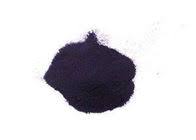Top Indigo Plants Perfect for Natural Dyeing in Your Garden
Best Indigo Plants for Dyeing A Guide for Artisans
Indigo dyeing has a rich history, rooted in various cultures around the world. The vibrant blue hues produced by indigo plants have adorned textiles for centuries. While there are numerous plants that can yield indigo dye, a few stand out for their effectiveness and ease of use. Here, we explore some of the best indigo plants for dyeing, perfect for artisans looking to incorporate natural dyes into their work.
Often referred to as true indigo, *Indigofera tinctoria* is one of the oldest sources of blue dye. Native to Asia, it thrives in warm climates and grows best in well-drained soil. The leaves of this plant are harvested, fermented, and processed to extract the indigo dye. It is favored by artisans for its high yield and brilliant color, making it a staple in natural dyeing practices.
2. Isatis tinctoria
Commonly known as woad, *Isatis tinctoria* has been used in Europe for centuries as a source of blue dye, especially before the spread of indigo from Asia. Woad produces a somewhat lighter shade of blue compared to true indigo. However, it is hardy and can be grown in cooler climates, making it accessible to northern artisans. The dye extraction process is similar, involving fermentation and oxidation to develop the color.
best indigo plants for dyeing

3. Polygonum tinctorium
Also known as Japanese indigo, *Polygonum tinctorium* is especially popular among contemporary dyers. It is celebrated for producing vibrant blue shades and is easy to grow in garden settings. This plant is particularly favored in East Asia, where it has been cultivated for generations. The dyeing process involves similar steps harvesting, fermentation, and oxidizing the dye, resulting in stunning hues that appeal to textile artists.
4. Baphicacanthus cusia
For those looking for a unique option, *Baphicacanthus cusia*, known as Chinese indigo, is gaining popularity. This plant is native to Southeast Asia and is known for producing rich blue dyes. Although less common than the other indigo sources, its flowers and leaves are utilized to create a distinct dyeing experience. Its cultivation requires specific conditions but rewards artisans with a unique color palette.
Conclusion
Selecting the right indigo plant can greatly enhance the quality and variety of colors in your textile projects. Whether you choose traditional sources like *Indigofera tinctoria* and *Isatis tinctoria* or explore alternatives like *Polygonum tinctorium* and *Baphicacanthus cusia*, each plant offers something unique. By embracing these natural options, artisans not only create stunning fabrics but also honor the age-old traditions of dyeing that have endured through generations. Happy dyeing!
-
The Timeless Art of Denim Indigo Dye
NewsJul.01,2025
-
The Rise of Sulfur Dyed Denim
NewsJul.01,2025
-
The Rich Revival of the Best Indigo Dye
NewsJul.01,2025
-
The Enduring Strength of Sulphur Black
NewsJul.01,2025
-
The Ancient Art of Chinese Indigo Dye
NewsJul.01,2025
-
Industry Power of Indigo
NewsJul.01,2025
-
Black Sulfur is Leading the Next Wave
NewsJul.01,2025

Sulphur Black
1.Name: sulphur black; Sulfur Black; Sulphur Black 1;
2.Structure formula:
3.Molecule formula: C6H4N2O5
4.CAS No.: 1326-82-5
5.HS code: 32041911
6.Product specification:Appearance:black phosphorus flakes; black liquid

Bromo Indigo; Vat Bromo-Indigo; C.I.Vat Blue 5
1.Name: Bromo indigo; Vat bromo-indigo; C.I.Vat blue 5;
2.Structure formula:
3.Molecule formula: C16H6Br4N2O2
4.CAS No.: 2475-31-2
5.HS code: 3204151000 6.Major usage and instruction: Be mainly used to dye cotton fabrics.

Indigo Blue Vat Blue
1.Name: indigo blue,vat blue 1,
2.Structure formula:
3.Molecule formula: C16H10N2O2
4.. CAS No.: 482-89-3
5.Molecule weight: 262.62
6.HS code: 3204151000
7.Major usage and instruction: Be mainly used to dye cotton fabrics.

